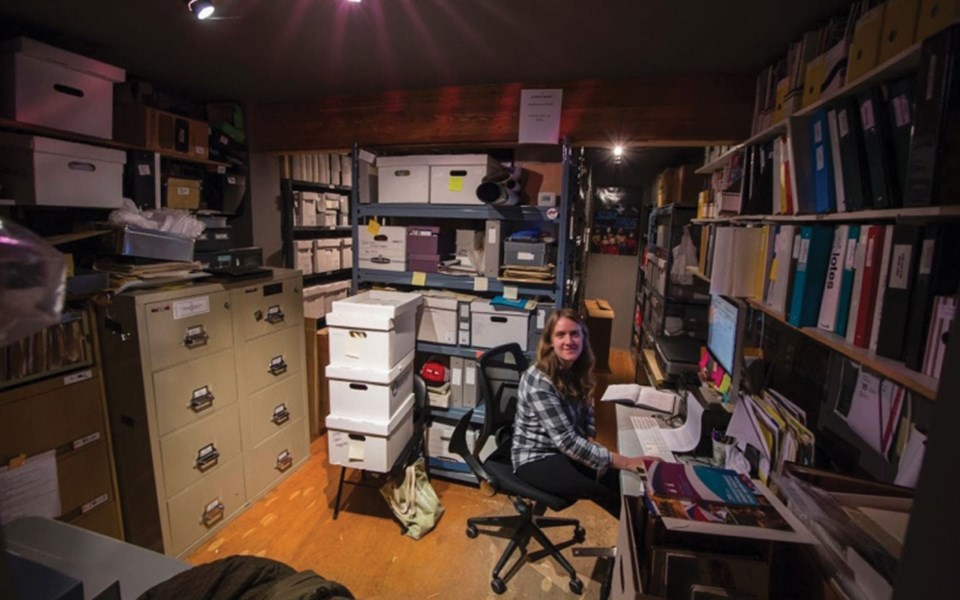The Whistler Museum houses a permanent exhibition chronicling the growth of Whistler, the journey to the 2010 Olympic and Paralympics Games, and the history of the ski resort.
A majestic wolf nestles in the corner of the natural history section, while in the back there is occasionally a temporary exhibit.
Most recently the temporary exhibit focused on Isobel and Don MacLaurin, two important figures to the Whistler scene. Items displayed ranged from a painting Isobel had done of a black bear and cubs, which was displayed in the original Roundhouse on Whistler Mountain, to Don's 1977 award for Innovation in Education.
However, there is more to this museum, as it also houses the Whistler archives. But what exactly does that entail?
As a masters student in Archival Studies, I often get asked: "But what are archives?" or "So what does an archivist do?" Answering these questions is not so easy. Archives, and the archivist's role, are nuanced and complicated, and they play an important function in society, including Whistler's.
What are archives? In the Whistler museum, the archives are held in a room, a basement and a few storage containers filled with documents, photographs, artifacts, and, for the remainder of the summer, include two hard-working students.
Working in an archive can include many things. Appraisal, for example, is an important function that involves deciding which records to keep and which ones don't fit within the archives' mandate.
The Whistler Museum and Archives' mandate is to collect, preserve, and interpret the natural and human history of mountain life, emphasizing Whistler. This mandate gives us a broad scope around what to acquire or keep to accurately represent the town's rich heritage.
There is also arrangement and description—this consists of arranging records in structures that represent them best and makes it easy for researchers to review them.
A third function is preservation, which is an important part of archival work. It consists of activities like putting records in protective files, being aware of temperature and humidity levels, and hoping that the shadow you just saw scurrying under the shelf wasn't a silverfish! (Museum collections are very susceptible to pest damage.)
We also digitize materials, both to preserve them and to make them available to a wider audience. In addition, we help researchers find the records they need.
The archives are open to the public by appointment; staff will have materials available to you when you arrive and be happy to assist with your research needs.
In a society, archives preserve history and aim to be as accurate and representative as possible about the community they represent.
In a town like Whistler, archives contribute to building a solid foundation of civic pride in our shared heritage. They show us how far we have come from the Rainbow Lodge days, the monumental effort that brought the Olympic and Paralympics Games to Whistler in 2010, and generally instill a sense of pride in the tireless individuals who brought to life the Whistler we all know and love.
Sasha Duranseaud is one of two summer collections assistants at the Whistler Museum. She will be returning to the University of British Columbia in the fall to continue her Masters in Archival Studies.




